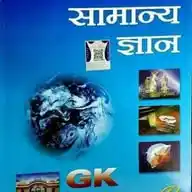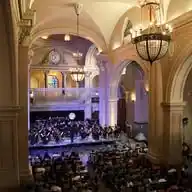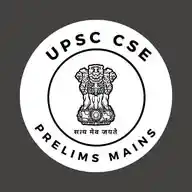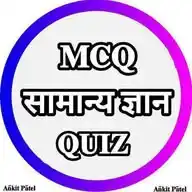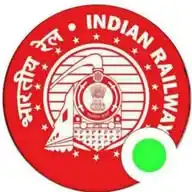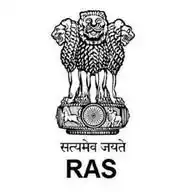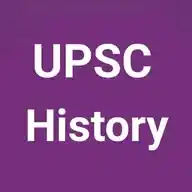
UPSC History Prelims Mains Notes Indian History World History UPSC History UPSC MCQs Quiz Pyqs
71.8K subscribers
About UPSC History Prelims Mains Notes Indian History World History UPSC History UPSC MCQs Quiz Pyqs
Welcome to UPSC IAS IPS State PCS Civil Services UPSC History Geography Polity Economics Economy UPSC PSIR Essay Ethics Sociolog UPSC Constitution Political Science Politics Maths Biology Physics UPSC National International Relations Anthropology art and Culture UPSC Environment Ecology Chemistry Mapping IR Security Society Science & Technology UPSC CSAT Law Judicial Services India Bharat Pib Daily News Lok Sabha Rajya Sabha News UPSC Short Revision Magazine Notes Interview Optional Subjects Free Topic Wise Mock Test Series UPSC Prelims Mains MCQs Quiz Pyqs DM SDM Sir Mam Samanya Hindi Vyakaran Learn English Grammar Vocabulary Speaking Spoken Government Schemes Jobs Yojana Kurukshetra Static GK GS UGC NET IIT Jam JRF PHD UPPCS UPPSC UP PCS J UP PCS RO ARO UP Police SI BPSC MPPSC MPPCS MPSC UKPSC WBPSC RPSC RAS OPSC JPSC GPSC HPSC RPSC KPSC CGPSC HPPSC HPSC TNPSC APPSC Delhi Students Police SI ASI SSC CGL Banking IBPS Po Reasoning Intersting Aibe NCERT Books Neet Doctor Patwari Railway Sarkari Nokari Rojgar Result Reet UP CBSE Board Tet CTET Super Tet PET RBI Lower Upper PCS Tricks Topic Wise Clat Exam Guide Computer Group D Rrb Rrc Alp NTPC Uttar Pradesh Bihar Madhya Pradesh Haryana Uttarakhand Andhra Pradesh Sikkim Tripura Assam Manipur Goa Jammu and Kashmir Ladakh Kerala Rajasthan Gujarat Himachal Pradesh Punjab MBA UG PG Epfo World CAPF CPO Stenographer LDC BDO VDO CSIR MBBS AIIMS Scientist Clark NABARD SEBI ISRO DRDO Exams Current Affairs UPSC Class Notes Batch PDF PDFs Download Hindu Indian Defence Airforce Navy Army Motivational Suvichar Quotes Education Assistant Professor JNU DU University Constable Teacher Crack UPSC Officer Foundation Course Dream UPSC Target Mindmaps Upsssc Mentorship Gyan Update Law Commission India Reports High Court HC Supreme Court SC News Judge Case Law Today Judgement Handwritten Hand Written General knowledge Online Study Material Point UPSC Mission Topper Paper Civics Syllabus Academy Institute UPSC Operation Sindoor Line of Control Loc Budget Media Organization Portal Jobs
Similar Channels
Swipe to see more
Posts

*🛡️First Anglo- Mysore War(1767-1769)* ♟️The English were confident of their military strength after their success in Bengal. They concluded a treaty with the Nizam of Hyderabad (1766) persuading him to give them the Northern Circars (region) in lieu of which they said they would protect the Nizam from Haidar Ali. Haidar already had territorial disputes with the Nawab of Arcot and differences with the Marathas. ♟️The Nizam, the Marathas, and the English allied together against Haidar Ali. Haidar Ali with his diplomatic skill turned the Nizam into an ally and paid the Marathas to turn them neutral. ♟️The war concluded with the Treaty of Madras which provided for the exchange of prisoners and mutual restitution of conquests. Haidar Ali was promised the help of the English in case he was attacked by any other power.

🛡️ *Maharaja Sawai Jai Singh II (1693-1744)* ♟️He was a great warrior and astronomer. He came to power at the age of II on the death of his father Maharaja Bishan Singh. ♟️He was feudatory of the Mughals and Aurangazab conferred the title of Sawai to Jai Singh, meaning one and a quarter, a title that all of Jai Singh’s descendants kept. ♟️He was trained by the best teachers and scholars in art, science, philosophy and military affairs. ♟️Jai Sing’s lineage can be traced back to the Kucchwaha Rajput clan who came to power in the 12th century. ♟️He built Astronomy Observatories at Delhi, Jaipur, Varanasi, Ujjain and Mathura known as the Jantar Mantar. ♟️Jaipur gets its name from him. Recently it has been declared a UNESCO World Heritage Site.

*🛡️Gopalhari Deshmukh ‘Lokahitwadi’ (1823-1892)* ♟️Belonged to Maharashtra. ♟️Against Hindu orthodoxy and caste system. ♟️Believed in rational, modern, and secular principles. ♟️Wrote for weekly Prabhakar under the pen name ‘Lokahitwadi’. ♟️Started weekly Hitechu. ♟️Helped in founding periodicals like Gyan Prakash, Indu Prakash, Lokahitwadi.

*🛡️Ishwar Chandra Vidyasagar (1820-1891)* ♟️Man of high moral standards, humanist, and proponent of modern education. ♟️Appointed Principal of Sanskrit college in 1850 in Bengal. ♟️Opened Sanskrit College to non-Brahmins. ♟️Ardent supporter of Widow remarriage. Helped legalized it. ♟️One of the pioneers of higher education for women. ♟️Appointed as the secretary of Bethune College (est. 1849).

*🛡️Debendranath Tagore (1817-1905)* ♟️Headed Tattavabodhini Sabha, formed in 1839, and its organ Tattavabodhini Patrika. ♟️Joined Brahmo Samaj in 1842. ♟️Favored Widow remarriage, Women education, abolition of Polygamy.

*🛡️Balshastri Jambedkar (1812-1846)* ♟️Pioneer of social reform through Journalism in Bombay. ♟️Against Brahminical domination. ♟️Father of Marathi Journalism. ♟️Newspaper: Darpan (1832), Digdarshan (1840). ♟️Founded Bombay Native General Library. ♟️Started the Native Improvement Society. ♟️First professor of Hindi at the Elphinston College. ♟️Director of the Colaba Observatory.

*🛡️Officials in the Later Vedic Age* *💎Administrative & Military Officials* ♟️Purohita – Chief Priest, sometimes called Rashtragopa. ♟️Senani – Supreme Commander of the army. ♟️Vrajapati – Officer-in-Charge of pasture lands. ♟️Jivagribha – Police Officer. *💎Judicial & Revenue Officials* ♟️Madhyamasi – Mediator for dispute resolution. ♟️Bhagadugha – Revenue Collector. ♟️Sangrahitri – Treasurer. *💎Royal & Court Officials* ♟️Mahishi – Chief Queen. ♟️Suta – Charioteer & court minstrel/musician.

*🛡️Gopal Krishna Gokhale (1866-1915)* ♟️A liberal leader of the Indian National Congress. ♟️Formed Servants of India society (1905) with the help of M. G. Ranade. ♟️Aimed at mobilizing a cadre of selfless workers for the service of the country in a religious spirit. ♟️Published Hitavadi (1911).

*🛡️Keshab Chandra Sen (1838-1884)* ♟️Appointed as Acharya of the Brahmo Samaj in 1858. ♟️Spread the ideas of the Samaj outside Bengal (in United Provinces, Bombay, Punjab, etc.). ♟️Showed radical views against caste system, favored inter-caste marriage. ♟️Expelled from Acharya’s position in 1865. ♟️Founded Brahmo Samaj of India (1866). ♟️Sadharan Brahmo Samaj (Ananda Mohan Bose, Shibchandra Deb and Umesh Chandra Datta) founded in opposition to his views.

*🌐Memberships Open for few Mintues Only* https://whatsapp.com/channel/0029Va95wLz1Xqua3dJy0L27 *🌐Link open just for 100 Subscribers ✅👆👆*
